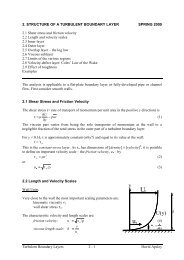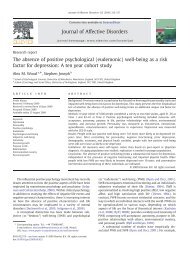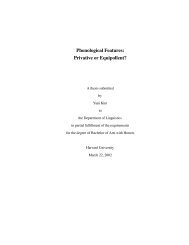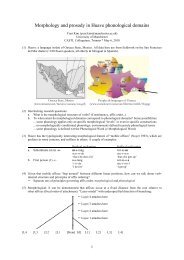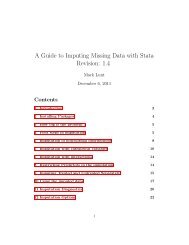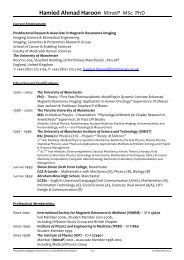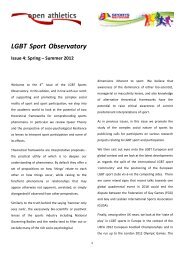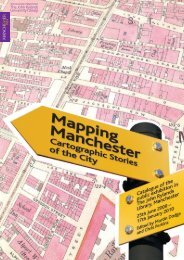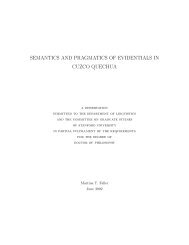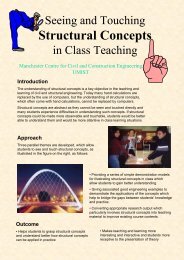Crime and Punishment The most important things to read on this are ...
Crime and Punishment The most important things to read on this are ...
Crime and Punishment The most important things to read on this are ...
You also want an ePaper? Increase the reach of your titles
YUMPU automatically turns print PDFs into web optimized ePapers that Google loves.
What does Rimbaud <str<strong>on</strong>g>most</str<strong>on</strong>g> dislike in c<strong>on</strong>temporary bourgeois culture? (Beauty, women, talk<br />
of degenerati<strong>on</strong> &emdash; cp. the criminal, who was thought of then as criminal because he<br />
was degenerate; the homosexual <str<strong>on</strong>g>and</str<strong>on</strong>g> the col<strong>on</strong>ial other, or subject.)<br />
How would you comp<strong>are</strong> Rimbaud's critique of his age with Nietzsche's?<br />
What is new in Rimbaud's poetry? How would you begin <str<strong>on</strong>g>to</str<strong>on</strong>g> comp<strong>are</strong> it with Emily<br />
Dickins<strong>on</strong>'s?<br />
Emily Dickins<strong>on</strong><br />
Born, 1830 at Amherst, Massachusetts; the oldest <str<strong>on</strong>g>and</str<strong>on</strong>g> <str<strong>on</strong>g>most</str<strong>on</strong>g> traditi<strong>on</strong>al part for settlement in<br />
America, called "New Engl<str<strong>on</strong>g>and</str<strong>on</strong>g>." Most wrapped up in the past, <str<strong>on</strong>g>and</str<strong>on</strong>g> in Christianity, <str<strong>on</strong>g>most</str<strong>on</strong>g><br />
remote from black culture.<br />
In 1855, the family moved <str<strong>on</strong>g>to</str<strong>on</strong>g> the house that she lived in till her death in 1886. Her brother,<br />
Austin, married Susan Gilbert in 1856. <str<strong>on</strong>g>The</str<strong>on</strong>g> wife was ED's <str<strong>on</strong>g>most</str<strong>on</strong>g> valued female friend, <str<strong>on</strong>g>and</str<strong>on</strong>g> the<br />
emoti<strong>on</strong>al intensity has often prompted discussi<strong>on</strong> of lesbianism in Dickins<strong>on</strong>'s work.<br />
In 1858 <str<strong>on</strong>g>and</str<strong>on</strong>g> 1861, ED drafted letters <str<strong>on</strong>g>to</str<strong>on</strong>g> a mysterious "Master" who has not been identified,<br />
<str<strong>on</strong>g>and</str<strong>on</strong>g> in 1861, seems <str<strong>on</strong>g>to</str<strong>on</strong>g> have had a crisis-year. From <strong>this</strong> time <strong>on</strong>, she became more <str<strong>on</strong>g>and</str<strong>on</strong>g> more<br />
reclusive, <str<strong>on</strong>g>and</str<strong>on</strong>g> dressed in white:<br />
- the colour of virginity, of purity<br />
- of Miss Havisham, in Dickens’s Great Expectati<strong>on</strong>s<br />
- the crisis-colour for America, since 1861-5 saw the Civil War <str<strong>on</strong>g>and</str<strong>on</strong>g> the questi<strong>on</strong> of the black<br />
as an issue that would not go away. White is therefore the colour of obsessi<strong>on</strong>, or of<br />
pathology: if she dressed in white, that might suggest that she was recognising, or resp<strong>on</strong>ding<br />
<str<strong>on</strong>g>to</str<strong>on</strong>g> a sickness in America; which affected American women, <str<strong>on</strong>g>and</str<strong>on</strong>g> also denied their desire.<br />
- the colour of snow, of paper that has not been printed <strong>on</strong> (see the poem "Publicati<strong>on</strong> is the<br />
aucti<strong>on</strong>" no. 709. Dickins<strong>on</strong> wants her work <str<strong>on</strong>g>to</str<strong>on</strong>g> remain like white paper.<br />
On Dickins<strong>on</strong>, you should <str<strong>on</strong>g>read</str<strong>on</strong>g>:<br />
S<str<strong>on</strong>g>and</str<strong>on</strong>g>ra Gilbert <str<strong>on</strong>g>and</str<strong>on</strong>g> Susan Gubar, <str<strong>on</strong>g>The</str<strong>on</strong>g> Madwoman in the Attic, 1979<br />
John Cody, After Great Pain, 1971<br />
Robert Weisbuch, Emily Dickins<strong>on</strong>'s Poetry, 1975<br />
Paula Bennett, Emily Dickins<strong>on</strong>, Woman Poet, 1991<br />
Martha Nell Smith, Rowing in Eden: Re-<str<strong>on</strong>g>read</str<strong>on</strong>g>ing Emily Dickins<strong>on</strong><br />
(there is a large sec<strong>on</strong>dary literature <strong>on</strong> Dickins<strong>on</strong>. For the idea of the hymen, see the essay<br />
by Geoffrey Hartman in "Criticism in the Wilderness," 1980.<br />
For a Bibliography, see Judith Farr, ed. "Emily Dickins<strong>on</strong>: A Collecti<strong>on</strong> of Critical Essays"<br />
1996.<br />
Note what there is not in ED's poetry:<br />
No his<str<strong>on</strong>g>to</str<strong>on</strong>g>ry in the poems<br />
No his<str<strong>on</strong>g>to</str<strong>on</strong>g>ry <str<strong>on</strong>g>to</str<strong>on</strong>g> be worked out from the poems: they seem <str<strong>on</strong>g>to</str<strong>on</strong>g> have no his<str<strong>on</strong>g>to</str<strong>on</strong>g>ry<br />
No identifiable speaker.<br />
No ranking, no selecti<strong>on</strong>, or ordering of the poems<br />
No study of how <str<strong>on</strong>g>to</str<strong>on</strong>g> write, or comments <strong>on</strong> what she writes<br />
No plot <str<strong>on</strong>g>to</str<strong>on</strong>g> the poems overall<br />
No titles<br />
No punctuati<strong>on</strong>.






